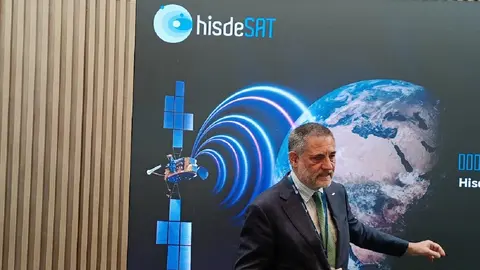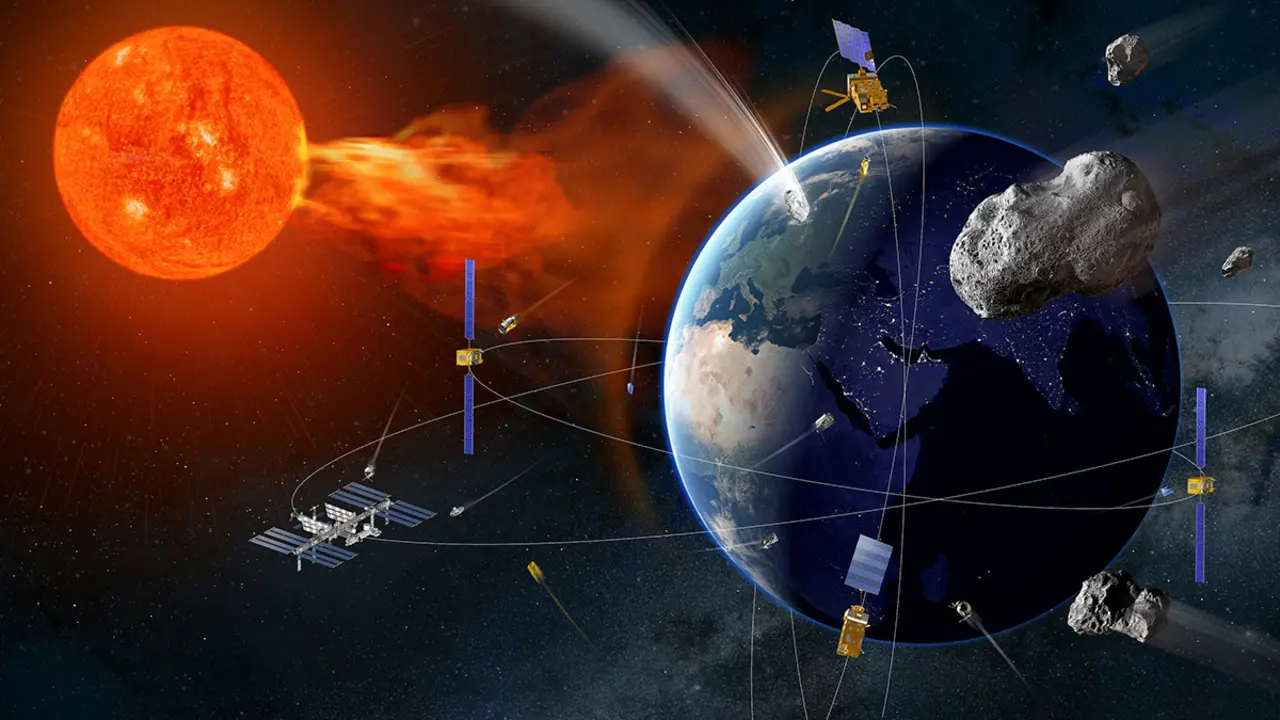A triumphant year for Hisdesat: two satellites in orbit and another two under contract for 2025

Hisdesat, the Spanish operator of strategic government satellite services, has every reason to feel more than satisfied. Its objectives for 2025 have already been met or are about to become a reality, which means that its future and business prospects on a national and international scale are assured until well beyond 2040.
And it will achieve this within the Indra group, the national technology company whose CEO and chairman, José Vicente de los Mozos and Ángel Escribano, respectively, have committed to Hisdesat, making it their main target. With this company in its possession, the intention of both executives is to place Indra ‘at the forefront of the European space industry’ and achieve ‘1 billion euros in space revenue by 2030’, as de los Mozos pointed out five months ago.

The path to gaining control of Hisdesat has had one imperative: the acquisition from the Red Eléctrica (Redeia) group of 89.68% of Hispasat, the commercial satellite communications company that is Hisdesat's largest shareholder. The 725 million euros transaction was made public at the end of January and the purchase will be effective ‘in October’, once all the necessary authorisations have been obtained, according to recent estimates by Hispasat CEO Miguel Ángel Panduro.
Blessed and promoted by the Moncloa Palace, Indra's investment is a move in favour of a winning horse. Global demand for space platforms for the exclusive use of governments and official institutions continues to grow, whether for encrypted communications or Earth imaging, known as spy satellites.
Hisdesat participates in both leagues with front-row electronic ears and eyes that capture global interest. First, with its new generation of secure communications satellites, Spainsat, known as Spainsat NG. Hisdesat's CEO, Miguel Ángel García Primo, and its president, Admiral Santiago Bolibar, say they are ‘very excited’ to be able to offer improved services to their important customers. Among the national clients are the Ministries of Defence, Foreign Affairs and the Interior, and among the international clients are the US Departments of State and Defence, NATO, the European Commission and the Ministries of Defence of several European countries.

About to receive the go-ahead in Toulouse
The Secretary of State for Defence, Amparo Valcarce, had the opportunity to see for herself the advanced state of the second Spainsat, the NG-II. She did so three days ago when she visited the Astrolabe facilities, the spacecraft assembly, integration and testing centre owned by the large European industrial corporation Airbus in the city of Toulouse, in the south of France.
Valcarce was informed of the high technology incorporated into these technological gems of Spanish ingenuity: two advanced active X-band antennas. This was explained to him by Enrique Granell, head of development at Airbus Space Systems Spain, who detailed the laser tests that both antennas are undergoing ‘to ensure their full operability once the NG-II is placed in space’.
Their correct functioning must be guaranteed before the satellite is shipped by sea to the Cape Canaveral space base in Florida for launch during the launch window set for 22 to 29 October. The transport vehicle contracted is a Falcon 9 rocket from SpaceX, owned by magnate Elon Musk, who until a few weeks ago was President Trump's most trusted man and is now one of the biggest critics of his economic policy.

While the second Spainsat is undergoing its final testing, which will conclude at the end of August, its older twin, Spainsat NG-I, is just a month away from entering service. Launched into space at the end of January in an orbit just over 400 kilometres above Earth, over the last five months it has been propelled by its electric engines to a geostationary orbital position of 32.9º East, at an altitude of 36,000 kilometres.
This is the place in space where Hisdesat technicians at the Satellite Control and Operations Centre in Hoyo de Manzanares, near Madrid, will carry out the final checks. They have the whole of July and advanced programmes at their disposal to do this. They will control the manoeuvres and gradually move the NG-II, weighing more than 6 tonnes, to its final orbital position at 29º East. To do this, they will have to eject the Hisdesat satellite currently occupying that position, the Xtar-Eur, weighing 1.4 tonnes and launched in February 2005, more than 20 years ago.
The Paz 2 radar satellites in sight
But what will happen to the Xtar-Eur? Hisdesat's chief executive, García Primo, explains. With the little propellant left in its tank – hydrazine, the most commonly used conventional fuel for propelling satellites – ‘we are going to raise it to its final parking orbit, which is 36,250 kilometres above the Earth's surface, i.e. 250 kilometres above the geostationary orbit’, the place where disused space devices are stored.
Also known as the graveyard orbit, ‘this is where a significant number of deactivated and technically dead satellites are located,’ which will continue to circle the Earth ‘forever and ever, due to the balance of forces that prevails there and makes it impossible for them to move from that orbit,’ confirms García Primo.

Any other news in the very short term? Yes, before 1 August, perhaps this week or next week. The forecasts shared by the Secretary of State for Defence and Hisdesat are the signing of an agreement for the development, manufacture, launch and operation of a pair of Paz 2 satellites, the new generation of synthetic aperture radar (SAR) satellites that are the replacement for the Paz satellites, in orbit since 22 February 2018, i.e. for almost seven years. The Defence-Hisdesat agreement will be followed almost immediately by the contract between Hisdesat and Airbus Space Systems Spain as the main contractor.
On 20 May, the Council of Ministers authorised an investment of around 1.1 billion euros to finance and move forward with the Paz 2 programme, which is long overdue after spending too many years on the back burner awaiting approval from the Moncloa. These satellites are highly complex technologically, and the consequence of the long delay is that ‘the first Paz 2 will be in orbit at the end of 2030 at the earliest and in service in the summer of 2031,’ according to sources familiar with the programme.

The big problem is that for Paz and the first Paz 2 to overlap in orbit, the older one would have to extend its life by about six years, which means doubling its current time in service. This is practically impossible, as it is located at an altitude of 514 kilometres and requires continuous fuel consumption to prevent it from re-entering the atmosphere and being destroyed. Fortunately, the horizon and NATO have cleared the clouds that were hiding the realisation of the Paz 2 pair, and we all know that better late than never.












